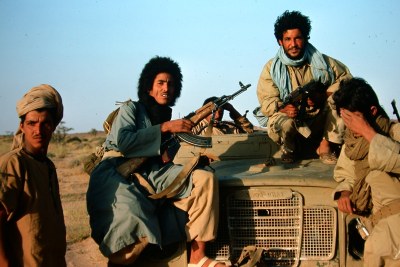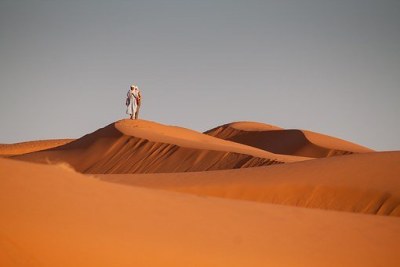-
Western Sahara: Morocco Drives a War in Western Sahara for Its Phosphates
allAfrica, 21 January 2022
In November 2020, the Moroccan government sent its military to the Guerguerat area, a buffer zone between the territory claimed by the Kingdom of Morocco and the Sahrawi Arab… Read more »
-
Morocco: Morocco's Phosphates Cache Eases Africa's Food Crisis
DW, 2 February 2022
Morocco holds 75% of the world's reserves of phosphate, which is used in fertilizer. The country's exports are helping to reduce hunger in sub-Saharan Africa, but high energy… Read more »
-
Western Sahara: Morocco Prevents Sahrawis From Marking Universal Declaration of Human Rights
SPS, 13 December 2021
Moroccan occupation forces have brutally prevented a group of Sahrawi from exerting their right to demonstrate peacefully and celebrate the International Day of Human Rights,… Read more »
-
Western Sahara: Sahrawi Army Ready to Liberate All Occupied Territories (Chief of Staff)
SPS, 13 November 2021
The Chief of Staff of the Sahrawi Army, Mohamed Al-Wali Akeik, affirmed that the Saharawi army is fully prepared to liberate all occupied Sahrawi territories and regain… Read more »
-
North Africa: Morocco Keen to 'Turn Page' On Western Sahara Conflict but No Shift On Territorial Rights
RFI, 10 November 2021
Morocco's foreign minister says the kingdom is committed to finding a solution to the "artificial conflict" in Western Sahara but ruled out negotiating its rights to the territory… Read more »
-
North Africa: Western Sahara Conflict Risks Spilling Over Into the Sahel - How It Can Be Resolved
The Conversation Africa, 13 October 2021
The United Nations recently appointed a new envoy for Western Sahara - Staffan de Mistura. This is a welcome step towards resolving the long-running conflict between the… Read more »
Morocco Drives a War in Western Sahara for Its Phosphates
In November 2020, the Moroccan government sent its military to the Guerguerat area, a buffer zone between the territory claimed by the Kingdom of Morocco and the Sahrawi Arab Democratic Republic (SADR). The Guerguerat border post is at the very southern edge of Western Sahara along the road that goes to Mauritania.
The presence of Moroccan troops "in the Buffer Strip in the Guerguerat area" violated the 1991 ceasefire agreed upon by the Moroccan monarchy and the Polisario Front of the Sahrawi. That ceasefire deal was crafted with the assumption that the United Nations would hold a referendum in Western Sahara to decide on its fate; no such referendum has been held, and the region has existed in stasis for three decades now.
In mid-January 2022, the United Nations sent its Personal Envoy for Western Sahara Staffan de Mistura to Morocco, Algeria, and Mauritania to begin a new dialogue "toward a constructive resumption of the political process on Western Sahara." De Mistura was previously deputed to solve the crises of U.S. wars in Afghanistan, Iraq, and Syria; none of his missions have ended well and have mostly been lost causes. The UN has appointed five personal envoys for Western Sahara so far - including Mistura - beginning with former U.S. Secretary of State James Baker III, who served from 1997 to 2004.
By the end of November 2021, the government of Morocco announced that it had earned $6.45 billion from the export of phosphate from the kingdom and from the occupied territory of Western Sahara. If you add up the phosphate reserves in this entire region, it amounts to 72% of the entire phosphate reserves in the world. Phosphate, along with nitrogen, makes synthetic fertilizer, a key element in modern food production. This gives Morocco a tight grip over world food production. There is no doubt that the occupation of Western Sahara is not merely about national pride, but it is also argely about the presence of a vast number of resources - especially phosphates - that can be found in the territory, writes Globetrotter's Vijay Prashad.
InFocus
-
The Trump Administration's decision to recognise Kingdom of Morocco's sovereignty over the Sahrawi Arab Democratic Republic (SADR), in exchange for Morocco's recognition of ... Read more »
-
Morocco is set to resume relations with Israel - and the United States has granted a key concession on Western Sahara, Deutsche Welle reports. Moroccan King Mohammed VI annou Read more »
-
The South African government has allegedly taken offence to an article published by the Moroccan Press Agency which said that South Africa had been completely isolated during a UN ... Read more »

A map showing the location of Algeria (green), Morocco (orange) and Western Sahara (lighter orange).






